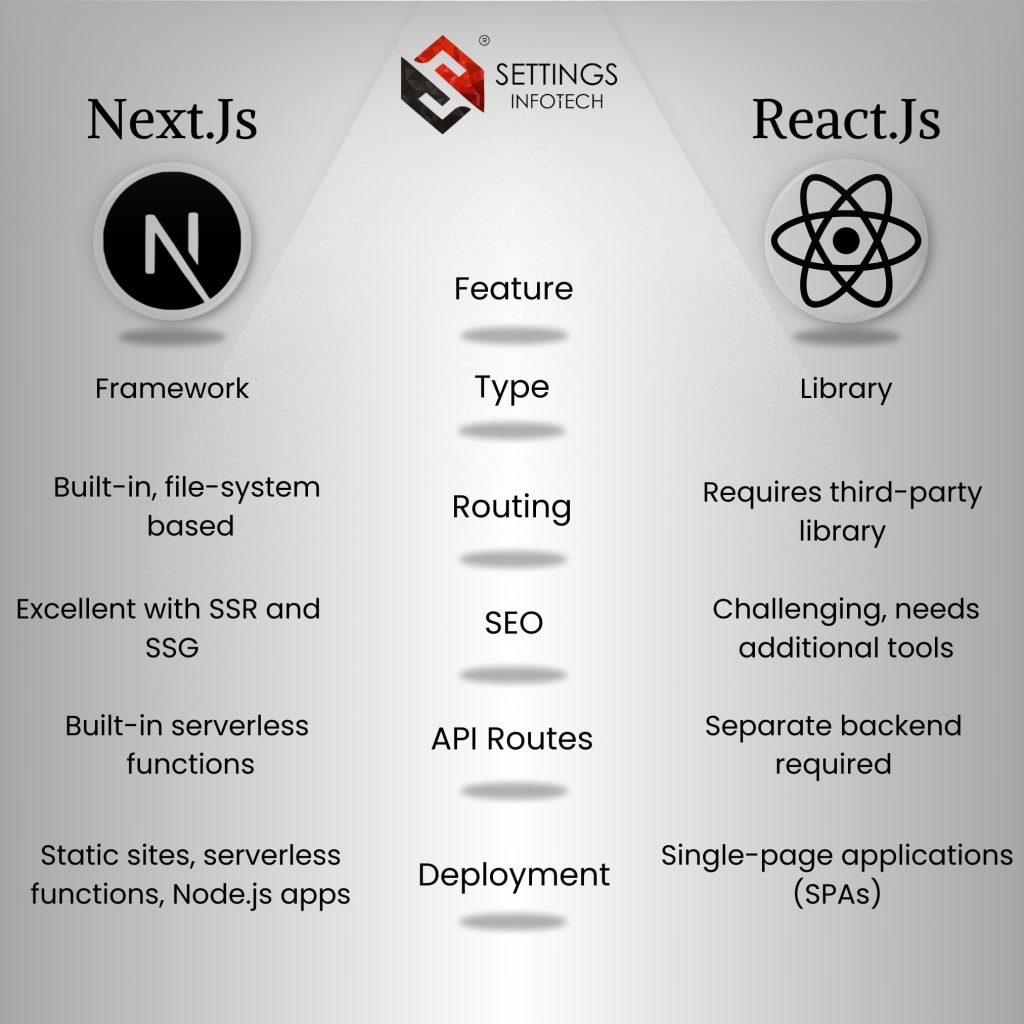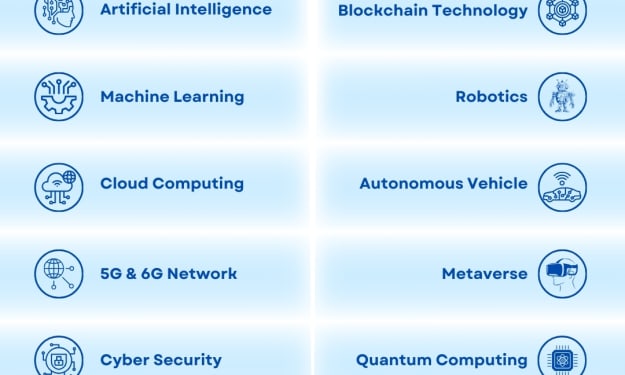Difference Between Next.Js and React.Js
React.Js and Next.Js full Guides

Introduction
In the always-changing world of web advancement, Respond and Next.js stand out as successful answers for making dynamic and intelligent UIs. In any case, for those new to the scene, recognizing the two advances can be troublesome. This article looks to reveal insight into the critical contrasts between Respond and Next.js, permitting you to figure out which is great for your next project.
React and Next.js. React, a popular JavaScript library, excels at crafting interactive UIs. Next.js, a framework built on React, expands its toolkit with features for full-fledged web applications. Now, let's dive deeper and understand which one is the perfect fit for your project!
Understanding the Fundamentals
React.js is a JavaScript bundle planned mainly for making UIs. It takes a part-based approach, permitting designers to break down confounded UIs into more modest, reusable parts. This seclusion works with code support and versatility. Respond succeeds at creating dynamic and intuitive web encounters; hence, it’s a famous decision for single-page applications (SPAs) and convoluted web interfaces.
Next.js, then again, is a structure based on Respond. It uses the center functionalities of Respond while giving extra highlights and improvements explicitly custom-made for web application advancement. Consider Next.js, a superset of Respond, offering a more thorough answer for building undeniable web applications.
Key Differences: Delving Deeper
Here’s a breakdown of the key differences between React.js and Next.js:
- Focus: Respond is about UI improvement, giving the structure blocks to make intuitive parts. Next.js, notwithstanding, reaches out past UI, offering highlights for directing, information getting, server-side delivery (SSR), and static webpage age (SSG), all vital parts of building web applications.
- Learning Curve: With its emphasis on UI parts, Respond has a gentler expectation to learn and adapt, particularly for those with a strong comprehension of JavaScript, HTML, and CSS. Next.js, while based on Respond, presents extra ideas like directing and getting information. On the off chance that you’re new to Respond, Next.js could have a more extreme expectation to learn and adapt at first.
- Flexibility vs. Opinionated Approach: Respond gives a lot of portability, letting designers utilize their #1 travel, information assembling, and overseeing state structures. Next.JS gives a more one-sided approach, offering worked-in answers for specific highlights.
- Performance: Next.js succeeds as far as execution because it has worked in advancements like SSR and SSG. These procedures pre-render content on the server, which prompts faster page loads and better website optimization. Respond, then again, utilizes client-side delivery (CSR) as a matter of course, which could bring about quicker beginning burdens for convoluted applications.
- Community and Resources: Respond has an enormous and dynamic local area, with a few chronicles, instructional exercises, and devices open. Next.js, while quick to create, has a bigger crowd than Respond. Nonetheless, the authority Next.js instructional exercise is perfect, and the construction exploits the broad Respond People group.
Making the Choice: When to Use Each
Use React When:
- You really want a serious level of adaptability and command over your application’s engineering.
- You’re fabricating a basic SPA or a UI part library.
- You’re happy with coordinating outsider libraries for directing, bringing information, and stating the executives.
- Your group has serious areas of strength in JavaScript and web improvement ideas.
Use Next.js when:
- You focus on execution and web optimization for your web application.
- You need a smooth-out improvement experience with worked-in highlights for steering, information getting, and SSR/SSG.
- You’re fabricating an internet business store, a blog, or a showcasing site with dynamic substance.
- Your group knows all about Respond and needs to use its advantages for an undeniable web application.
Conclusion
Respond and Next.js are both astounding web improvement innovations, yet they fill unmistakable needs. Respond gives adaptability to making UIs, though Next.js is a Respond-based innovation with usefulness for whole web applications.
About the Creator
Settings Infotech
Settings Infotech is an IT consulting and solutions provider offering diverse services in web development, mobile application development, & desktop software development. We are always challenged in the project.
Enjoyed the story? Support the Creator.
Subscribe for free to receive all their stories in your feed. You could also pledge your support or give them a one-off tip, letting them know you appreciate their work.






Comments
There are no comments for this story
Be the first to respond and start the conversation.